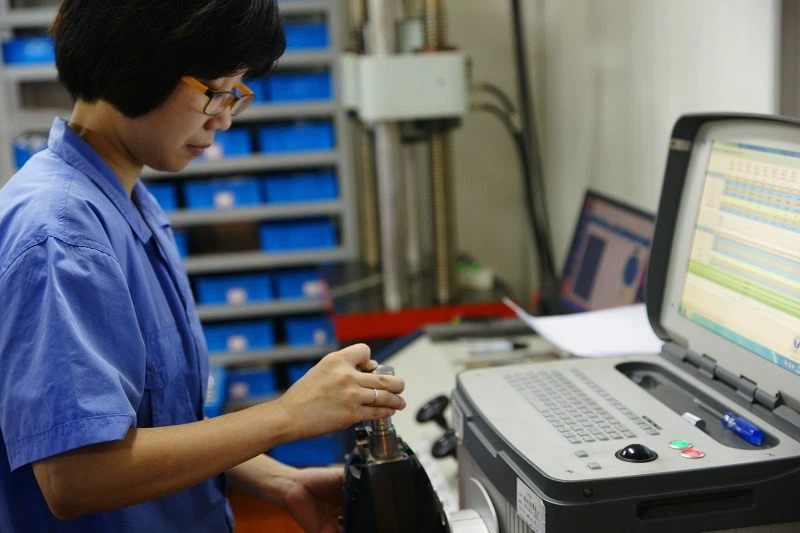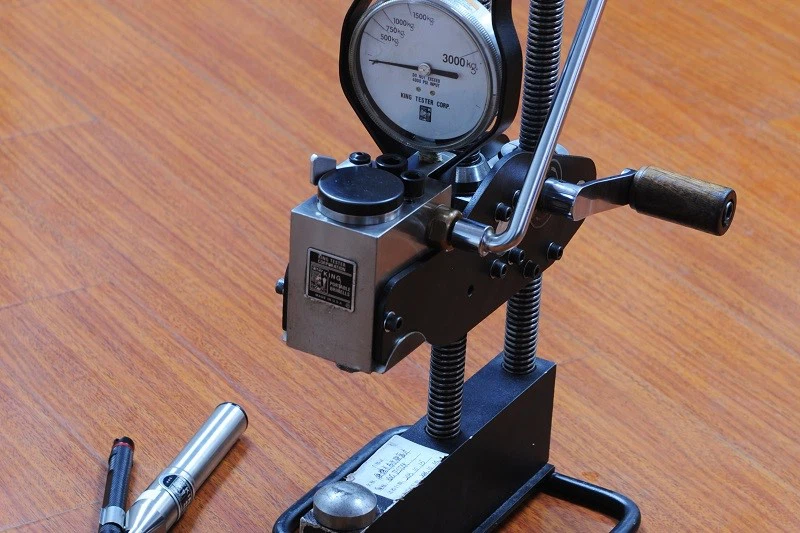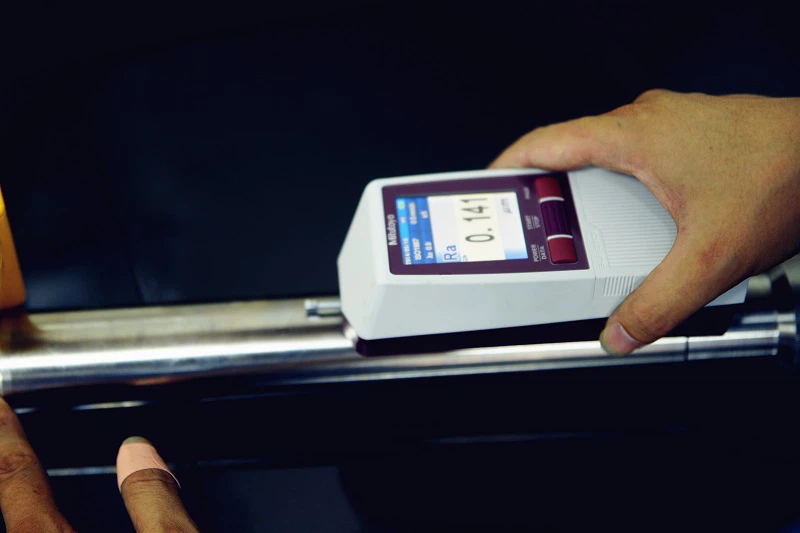Hydrostatic Pressure Test Pump is a special tool that tests the pressure resistance and sealing of equipment by applying liquid (usually water) pressure. Its testing principle is based on the effect of hydrostatic pressure (pressure generated when the fluid is stationary) on objects. Hydrostatic Pressure Test Pump is widely used in scenarios that require strict pressure testing. By simulating the pressure environment under actual working conditions, it ensures that equipment such as pipelines, containers, valves, etc. do not leak or structural damage during operation. It is one of the key equipment for industrial safety testing.




Product details


Product Details
· Detailed Parameters:
Plunger Diameter: 10 mm
Pump Speed: 318 rpm
Theoretical Flow Rate: 1.5 L/min
Effective Power: 1.5 KW
· Drive Power and Method:
Fixed chassis design ensures stable functioning.
The belt-driven system is powered by a 1.5KW four-pole standard motor.
· Media Contact Materials:
Hydraulic End Cylinder: Made of 2Cr13, which is highly corrosion resistant and long-lasting.
Valve Assembly: Made of 2Cr13, which provides excellent performance and longevity in high-pressure settings.
Plunger: Made of 2Cr13 and coated in tungsten carbide for increased wear resistance and endurance at high pressures.
Product Parameters
|
3DP20 |
|
|
|
Pump type: 3DP20 |
|
Pressure (bar): 32 Mpa |
|
|
Flow rate (L/min): 1.33 L/min |
|
|
Motor power (KW): 1.5 KW 4-pole |
|
|
Medium: Water |
|
|
Medium temperature ℃: Normal Temperature |
|
|
Valve accessories configuration: 1.Manual Pressure Relief Valve 2.Relief Valve 3.Vibration-resistant Pressure Gauge 4.Check Valve |
|
Product composition
1. Pump: The main structure of the Hydrostatic Pressure Test Pump is usually made of strong materials such as cast iron, steel or high-strength plastic.
2. Pressure gauge: Displays the pressure value in the test system in real time.
3. Valve: The input valve controls the flow of liquid into the pump body, while the output valve regulates the flow of liquid to the object being tested.
4. Power unit: The Hydrostatic Pressure Test Pump can be driven by a motor or manually controlled. Motor-driven pumps are powerful and can quickly reach higher pressures.
Working Principle
This Hydrostatic Pressure Test Pump usually consists of a water pump, a pressure gauge, and some connecting pipes. First, the test pump is connected to the equipment being tested, and then the liquid (usually water) is injected into the equipment through the water pump. As the liquid is injected, the pressure will gradually increase until it reaches the predetermined test pressure. During this process, the pressure gauge will display the current pressure value so that the operator can monitor the progress of the test.
feature
1. High-pressure capability: Hydrostatic pressure testing equipment is built to handle high pressures, often up to several thousand psi. This allows it to simulate the operating conditions that the device will encounter in actual use.
2. Accurate pressure measurement: The equipment is intended to precisely measure the pressure of the fluid used to test it. This is necessary to guarantee that the equipment under test is not subjected to pressures that exceed its design limitations.
3. Safety features: Hydrostatic pressure testing equipment usually incorporates safety features like pressure relief valves and pressure gauges to ensure safe operation and prevent over-pressurization.
4. Ease of use: The equipment is simple to set up and operate, with clear instructions and controls for the operator.
5. Portability: Hydrostatic pressure testing equipment is often portable, allowing it to be transported to the location of the equipment under test.
6. Data logging: Modern hydrostatic pressure testing equipment usually has data logging capabilities, which allow pressure and other test parameters to be recorded and examined later.
Maintenance and Care
1. Regularly check the pump body and seals:
Make sure that there are no cracks in the pump body and the seals are intact to avoid water pressure leakage.
2. Check the pressure gauge and valve:
Make sure the pressure gauge is accurate and the valve is working properly to avoid affecting the test accuracy.
3. Clean impurities in the pump:
The pump needs to be cleaned after use to prevent impurities in the water from entering the pump and affecting the normal operation of the pump.
4. Lubricate moving parts:
For pumps with mechanical parts, lubricate them regularly to reduce wear.
5. Regular calibration:
Calibrate the pressure gauge to ensure that the pressure value it reads is accurate to prevent errors during the test.
Factors to Consider When Selecting a Hydrostatic Pressure Test Pump
1. Application Requirements: Consider specific conditions such as pressure range, test frequency, and location and environment.
2. Power Availability: Determine if the test site has electricity or compressed air, or if a diesel or hand pump would be more appropriate.
3. Portability Needs: For field testing, lightweight or portable pumps such as hand and pneumatic pumps are preferred.
4. Budget Constraints: Diesel and CNC pumps may have higher upfront costs but offer unique advantages for specific testing needs.
5. Maintenance and Ease of Use: Evaluate maintenance requirements and the complexity of operating the pump, as well as the availability of replacement parts or service.
Quality Testing Equipment









Hot Tags: hydrostatic pressure test pump, China hydrostatic pressure test pump manufacturers, suppliers, factory








